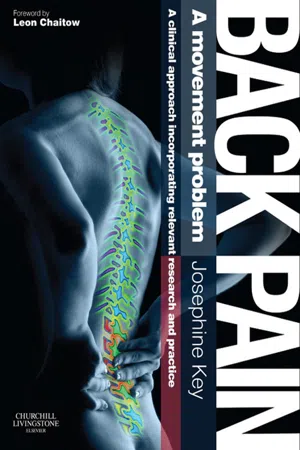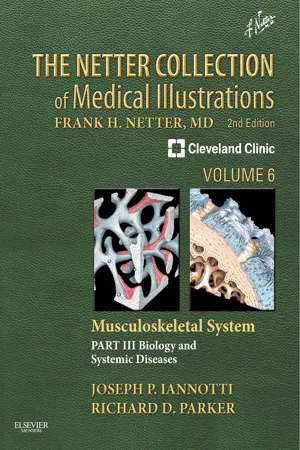Biological Sciences
Fast Twitch Fibres
Fast twitch fibers are a type of muscle fiber that contract quickly and generate a high amount of force. They are responsible for rapid, powerful movements such as sprinting or weightlifting. These fibers fatigue more quickly than slow twitch fibers but are essential for activities requiring bursts of strength or speed.
Written by Perlego with AI-assistance
Related key terms
Related key terms
1 of 4
Related key terms
1 of 3
7 Key excerpts on "Fast Twitch Fibres"
- Simon Rea(Author)
- 2015(Publication Date)
- Teach Yourself(Publisher)
Every muscle consists of different fibre types called slow twitch and Fast Twitch Fibres. Slow twitch muscle fibres, also called type I, contract slowly and are fatigue-resistant. They are recruited to perform endurance tasks, which involve contracting with low force over a long period of time. To enable them to work over long periods, they need to have a good blood supply so they can be provided with oxygen. As a result they contain many blood vessels as well as a red-coloured protein, myoglobin, which enables them to attract oxygen into the muscles. The red colour of slow twitch muscle fibres is one of their key features. Slow twitch muscle fibres gain their energy for contraction from the breakdown of glucose and fats in the presence of oxygen. This means that they are aerobic and thus capable of prolonged contractions.By contrast, fast twitch muscle fibres, also called type II, are twice the size of slow twitch muscles and contract, or twitch, at twice their speed, producing contractions of greater force. Fast twitch muscle fibres fatigue relatively quickly and are recruited to perform speed- and power-based tasks. They have a poor blood supply and gain their energy anaerobically through the breakdown of glucose and creatine phosphate that are stored within muscles in small quantities. Due to their relative lack of blood, blood vessels and myoglobin, fast twitch muscle fibres are whitish or grey in colour.
Slow twitch muscle fibres are red in colour, have a good blood supply and are slow to fatigue. They are used for endurance activities, such as long-distance running and cycling. Fast twitch muscle fibres are whitish in colour, have a poor blood supply and fatigue quickly. They are used for speed and power activities, such as sprinting and jumping.Key point: Slow and fast twitch muscle fibresIn the human body, postural muscles, such as the muscles found in the legs, core and back muscles are slow twitch, producing low forces over long periods of time and enabling us to stand for prolonged periods of time. The upper body in humans tends to have a greater number of Fast Twitch Fibres. Muscles actually contain a mixture of fast twitch and slow twitch fibres, which can be activated depending upon the body’s needs at that time. Humans are designed to have good levels of endurance and speed. The average human has about 50 per cent of each type of muscle fibre in their body, but endurance athletes will have slightly more slow twitch fibres, and speed athletes will have slightly more Fast Twitch Fibres. Table 2.5- eBook - ePub
Ecological Medicine 2ND Edition
The antidote to Big Pharma and Fast Foods
- Sarah Myhill, Craig Robinson(Authors)
- 2023(Publication Date)
- Hammersmith Health Books(Publisher)
*Slow twitch fibres are used when power demands are low. This makes them very efficient; they use small amounts of energy and give good endurance so that we can use them for a long time. They are rather weak fibres but are slow to fatigue and quick to recover. They are the fibres we use for walking or pottering about when we do not need much power.If we work a bit harder, we start to recruit intermediate twitch fibres.Fast Twitch Fibres are employed when power demands are high – for example, when we are working flat out to catch prey. They occupy much more space and give us big muscles. They require a lot of energy to cope with high power demands, fatigue very quickly and take a long time to recover once fatigued. During fast twitch we also move into anaerobic metabolism with the production of lactic acid. Lactic acid is painful and, as it builds up in the short term, inhibits mitochondrial function – so this sort of exercise is not sustainable. But it makes the difference between a successful or unsuccessful (depending on your view point) predator-prey interaction. A sprinter can sprint 100 metres but not a mile. Lions are clearly made up largely of Fast Twitch Fibres.A lion’s work hours are only when he’s hungry; once he’s satisfied, the predator and prey live peacefully together.Chuck Jones† , 1912 – 2002But the important point about lactic acid is that it provides a powerful stimulus to our energy delivery mechanisms which is to expand our muscles because it stimulates mitochondria to grow and divide. Symptomatic of this is big muscles. This is another useful clinical test. So, to improve energy delivery mechanisms it is also a case of ‘no pain, no gain’. The good news is that the pain is only short-lived. - eBook - ePub
- Zsolt Radák(Author)
- 2018(Publication Date)
- Academic Press(Publisher)
Table 2.2 shows the differences between the types of muscle fibers. The differences in activation threshold determine the activation order of the different fiber types in contraction. Slow-twitch muscle fibers with their excellent oxygen consumption rate and high mitochondria content and oxidative enzyme activity are the most efficient fibers. They are able to generate force at the point of contraction because of their low activation threshold. Most fibers of antigravity muscles are slow-twitch fibers, and these fibers are involved during walking and low intensity movements. One of the main laws in nature is profitability, which in this case means the engagement of the more profitable muscle fibers first. Fast-twitch muscle fibers with their higher activation thresholds and huge force generation are usable during flight and survival; however, these fibers consume a lot of energy and produce a lot of lactic acid (discussed later). They can only be activated by high intensity stimuli because of the higher threshold. To use an analogy, slow-twitch fibers are like economic city cars, while fast-twitch muscle fibers are like high-powered racing cars.2.3 Tendons and Connective Tissue
With the exception of mimetic facial muscles, muscles are connected to bones by tendons, which comprise of collagen fibers. Collagen has slow turnover (balance between protein synthesis and protein degradation), and a high half-life (over 200 days). Thus the adaptation of tendons is not comparable to muscle plasticity; however, their flexibility can be improved following physical training and can become more resistant to loading. Collagen is 85% of the dry weight of a tendon. A tendon’s oxygen and blood supply is moderate, healing following and injury is slow, and aging of tendons is faster because of the accumulation of the free radical related injuries. As already mentioned, the muscle-tendon junction is the most vulnerable part of the musculature, because it involves the connection of two totally different structures. - eBook - ePub
Lecture Notes
Human Physiology
- Ole H. Petersen, Ole H. Petersen(Authors)
- 2019(Publication Date)
- Wiley-Blackwell(Publisher)
The largest and fastest contracting type II fibres (the so-called fast fibres) have a poorly developed oxidative metabolism and depend largely on glycolysis for the production of ATP; consider for example running the 100 m sprint. A summary of these and other properties of the different fibre types is given in Table 5.1. Thus differences at the molecular, biochemical and histological level underpin the broad physiological performance differences of our muscles. Fig. 5.11 (a) Isometric twitch contractions of cat internal rectus and soleus muscles scaled to the same peak height. (Adapted from Cooper, S. & Eccles, J.C. (1930) J Physiol, 69, 377.) (b) Fatigue of fast (left), intermediate (middle) and slow (right) muscle fibres that were stimulated through their nerve supply at 40 Hz for 330 ms once each second. (From Burke, R.E., Levine, D.W., Tsairis, P. & Zajac, F.E. (1973) JPhysiol, 234, 723.) Regulation of contraction at the gross level The total force generated by a muscle depends on the number of active fibres and the level of activity in each fibre. Each motor axon entering a muscle makes contact with a number of muscle fibres; each of these fibres is innervated by a single terminal branch of that axon. Thus, groups of muscle fibres are activated synchronously. Motor units A motor unit comprises a motor neurone and the group of muscle fibres innervated by the branches of its axon (Fig. 5.12). Motor units vary greatly in size, ranging from one or two muscle fibres in the smallest units in muscles controlling the fine movements of fingers or eyes, to more than 2000 in the largest units in limb muscles. All the muscle fibres in a motor unit tend to be very similar in their properties; so the terms type I and type II are used for both motor units and muscle fibres. In general, the type I units of slow muscles are rather similar in size and are not particularly large; in contrast, type II units of fast muscles range from very small to very large - Jay Hoffman(Author)
- 2014(Publication Date)
- Human Kinetics(Publisher)
Two distinct fiber types have been identified and classified by their contractile and metabolic characteristics. These have been termed slow-twitch and fast-twitch fibers, also referred to as type I and type II, respectively. The characteristics of these fiber types are shown in table 1.1. As can be seen in the table, these fibers possess certain distinguishable characteristics that make them suited for either prolonged, low- to moderate-intensity activity (slow-twitch fibers) or short-duration, high-intensity activity (fast-twitch fibers). For many years, skeletal muscle fiber classification was limited to these two classifications (type I and type II), with type II fibers further subdivided into two distinct divisions: IIa and IIb. Type IIa fibers have a well-developed capacity for both aerobic and anaerobic metabolism and are commonly termed fast oxidative glycolytic. Type IIb fibers possess the greatest anaerobic capability and are termed fast glycolytic. With improvements in muscle-staining techniques and improved electrophoretic procedures using immunohistochemical analyses via Western blotting, additional subtypes within each fiber type have been reported (Staron et al. 1991; Fry, Allemeier, and Staron 1994). Subtypes of type I oxidative fibers have been labeled type I and type Ic. Type Ic fibers are thought to have less oxidative capacity than type I fibers. Early studies suggested that there was a spectrum of different fiber subtypes identified as type II fibers. It was proposed that these fibers, labeled IIc, IIac, IIa, IIab, and IIb, represented a continuum of aerobic and anaerobic characteristics (Pette and Staron 1990)- eBook - ePub
Back Pain - A Movement Problem
A clinical approach incorporating relevant research and practice
- Josephine Key(Author)
- 2010(Publication Date)
- Churchill Livingstone(Publisher)
fine gradations of force . These are also known as slow twitch fibres.Type 11 fibres in contrast, are fast to contract and relax. They are recruited only during high force activity and fatigue rapidly. These are also known as Fast Twitch Fibres. These also provide the rapid responses to perturbations of sudden and high loading.According to Trew and Everett,3 during low force contractions of a muscle, only Type 1 fibres may be recruited and so these are used mainly for normal everyday activities which do not require maximal or high force contractions. Their resistance to fatigue suits them well for this role. As the force generated by the muscle increases, the Type 11 fibres are progressively recruited and during maximal activity all motor units are involved. However maximal force rapidly declines due to the high fatigue rate of the force generating fibres. There is a wide variation in the proportion of the different fibre types between muscles and between people. Each person has a unique proportion of Type 1 to 11 fibres and the fibre type is largely determined genetically.3 Each motor unit within a muscle contains fibres of only one type.5Limb immobilization studies have demonstrated a conversion of fibre types with a decrease in slow twitch fibres and increase in the proportion of fast twitch.6Classification of muscles according to functional role
In attempting to simplify and aid the conceptual understanding of the complex roles that muscles perform, various different functional classification systems have been adopted. However, the different nomenclature used has to some extent confused the issue and there is a lack of general consensus on the subject. Each aspect is examined and a more holistic and inclusive classification system is subsequently proffered. - eBook - ePub
The Netter Collection of Medical Illustrations: Musculoskeletal System, Volume 6, Part III - Musculoskeletal Biology and Systematic Musculoskeletal Disease E-Book
The Netter Collection of Medical Illustrations: Musculoskeletal System, Volume 6, Part III - Musculoskeletal Biology and Systematic Musculoskeletal Disease E-Book
- Joseph P Iannotti, Richard Parker(Authors)
- 2013(Publication Date)
- Saunders(Publisher)
slow-twitch, fatigue-resistant (S) fibers. Energy is conserved by S fibers by a slow rate of relaxation following a twitch, and thus they require a low frequency of stimulation for the twitches to fuse into a sustained contraction (tetanus).Compared with type I fibers, type II fibers, which must generate high tensions rapidly but need not remain active for prolonged periods, are relatively poor in mitochondrial enzymes and are white in appearance. On the other hand, they are rich in ATPase and glycolytic enzymes. Because of the mechanical properties, they are called fast-twitch, fatigable (FF) or type 2b fibers.In recent years, it has become clear that some fibers have mechanical properties intermediate between those of S and FF fibers. They can generate a relatively fast twitch but are still fatigue resistant and are therefore called fatigue-resistant (FR) or type 2a fibers. Most muscles consist of a mixture of these three types of fibers, but the proportions vary depending on each muscle’s function and pattern of stimulation (i.e., training).Muscles can respond to exercise patterns by an appropriate shift in their metabolic characteristics. Isometric, anaerobic exercise results in an increase in the number of myofibrils and in the amount of contractile protein per fiber. Either other fiber types are converted to FF fibers or a higher actomyosin ATPase and glycolytic enzyme activity occurs for all fiber types in the muscle. Thus, muscles of weight lifters and sprinters contain a high proportion of FF fibers. In contrast, aerobic exercise such as long-distance running and swimming induces the reverse enzymatic pattern and increases the muscle’s ability to use oxygen. The proportion of FR and S fibers is larger in marathon runners than in other athletes. It is still unclear whether the fiber types actually change as a consequence of training or whether marathon runners choose this sport because of their muscle fiber composition.
Index pages curate the most relevant extracts from our library of academic textbooks. They’ve been created using an in-house natural language model (NLM), each adding context and meaning to key research topics.
Explore more topic indexes
Explore more topic indexes
1 of 6
Explore more topic indexes
1 of 4






